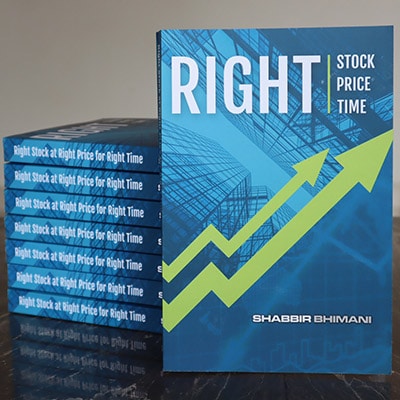Answering every question on Stop Loss. Explaining everything with an example so you can place a Stop Loss, calculate Trigger Price, understand Trailing Stop Loss, etc
Stop-loss is one aspect every retail investor lacks – including me. One needs a lot of courage to execute a stop loss, and there is no denying fact about it.
We all want to be gain, but the problem is, we all want to gain each time. Moreover, we don’t even consider the fact that we can be wrong and can incur a loss in trade.
Executing a stop loss is something every trader should learn. It is advisable to always have a stop loss in the market.
A market is a market, and anybody can be wrong.
Having a stop loss is very important when it comes to trading in the market.
So what is a stop loss in the first place.
What is Stop Loss?
In simple term, stop loss is the amount a trader is ok to loose for the gains if the trade hits the target.
So if you wish to buy a stock currently trading at ₹104, one can have a stop below ₹100 at ₹98. So the trader is ok to loose ₹6 on the trade.
Once it is ok to loose ₹6, the minimum target for the trade should be 1.5 times one is ready to lose on the trade. So it has to be ₹9 as gain.
Ideally, the target for the stock should be at least ₹104 + ₹9 = ₹113.
Where to Place a Stop Loss?
One should place the stop loss below the support levels. I prefer using the price action strategy to calculate support and resistance.
In our example, if support is around ₹100, we use ₹98, which is just below the support level as stop loss.
Similarly, the target should be set such that it doesn’t have a significant resistance level between the entry price and the target. Otherwise hitting the target can become tough.
So the stop loss decides if one is getting into the trade or not.
So in our example, if ₹110 is a significant resistance level for the stock, one can’t keep the target of ₹113 to enter the trade. The probability of hitting the target reduces considerably because of primary supply zone and resistance level around ₹110.
Calculating Stop Loss Can Make You an Investor
If you are buying 1000 units of share for a price of ₹104, you will end up losing 6k for the gain of 9k assuming the stop loss is ₹98 and target of ₹113 excluding brokerages.
But if you have a large account, the units increases and so the loss amount as well.
For 10,000 units the loss amount is 60k to trade.
Irrespective of gains, if you hit successive losses, can mean your trading bets will reduce. Instead of taking a position of 10k units, you may end up buying only 2k units.
As the account grows, your stop losses can mean you end up taking small positions. It is one of the reasons why I moved away from trading into investing.
I couldn’t scale up trading beyond a point.
Now I seldom trade. My open portfolio is inching towards 1Crore mark. If I trade with a 10% position of my account, the stop loss amount becomes too vast for me to enter the trade.
Moreover, trading creates income, and investing helps build wealth.
Should One Always Have a Stop Loss?
Ideally yes but some traders prefer not to have a stop loss. Instead, they prefer a hedge over a stop loss.
Either way, both are a way to limit an unfavorable situation when one is wrong. Moreover, when one is using a hedge, seldom they combine it with margin or leverage.
What is the Trigger Price for Stop Loss?
The price at which the stop-loss trade executes is known as a trigger price of stop loss.
Let me help you understand it with our example.
In our example, assume the buy order is complete at ₹104. Our stop-loss price is ₹98 and target of ₹113.
One can initiate an automated stop loss order along with the sale order at the target price.
So after the buy order is complete, I can right away create a sell order at ₹113. Once the price reaches the level, my sell order will be executed for the target price, and I grab the profits.
Similarly, I can set up a stop-loss order as well. The problem is I can’t keep a sell order at ₹98 directly. The reason is, the sell order will be executed right away at the current market price.
So we have a trigger price that comes into the picture. Every stop loss order has a trigger price.
Assume in our case if the price breaks ₹100 and reaches ₹99, we want to trigger our stop-loss order and sell the stock at ₹98.
So ₹99 becomes the trigger price when the stop loss order should be executed.
One can even have ₹98 as the stop loss trigger price and sell at market price, which can be anything below ₹98.
So for a buy order and sell stop loss, the condition is trigger price is less than the market price but higher than the order price.
Sell Stop Loss: Market Price > Trigger price > Order Price.
Similarly, for a short trade, the stop-loss order is for a buy order, and trigger price is higher than the market price but less than the order price.
Buy Stop Loss: Market Price < Trigger price < Order Price.
What is Trailing Stop Loss?
For a long position, if the price moves higher, we move the stop loss higher. It is a way to protect the risk and let the profits ride.
In our hypothetical example, if the stock price reaches ₹108, instead of keeping the stop loss at the same level of ₹98, we move it higher to ₹104 (our buy price) to make the position at the most no profit no loss.
Similarly, one may also have more than one targets. The first target is always 1.5 times our stop loss level of ₹6. However, we can also have a target of 2 times or even 2.5 times the loss value.
So 2 times means with a stop loss of ₹6, our target is ₹12 higher at ₹116 or 2.5 times which is ₹15 higher at ₹119.
For all the targets, our initial stop loss is ₹98, but as the price moves higher, one can increase the stop loss levels to be able to achieve higher target levels.
What is a Reasonable Stop Loss Percentage?
From my experience, having a 2% stop loss means one will stop out too early. Similarly having a 5% stop loss means the losses are huge.
So having anyway between 2 to 5% is a reasonable stop loss percentage.
Again, it can also vary from position to positions. Positional traders can have a stop loss percentage close to 5% whereas swing trades can have a stop-loss percentage close to 2%.
However, one should also consider the volume and automatic trade in the stock as a factor of stop-loss as well. So a share with high beta may have a higher stop-loss target and vice versa.
Should you Place an Automatic Stop Loss?
I don’t prefer to have an automatic stop loss because, after the dip, there is always a mediocre bounce. I like to use the bounce to cut my positions.
When a stop loss hits, it is all manual in my mind. I am looking to cut the position. I use the bounce to stop out rather than use an automated stop-loss order.
Let me explain again with the same example. So our stop loss was ₹98. The reason we had stop loss as ₹98 is because of the significant support level of ₹100. It is now broken, and so we have to stop out of the trade.
Instead of selling immediately, the support broken becomes resistance. The resistance is often tested but never crossed.
So I prefer to stop out as close as possible to ₹100 – ideally at ₹99.50 or so. It means you are actively trading in the market. For passive traders, having an automatic stop loss is preferable.
Final Thoughts
Do you trade with stop losses? Share your views in comments below.



Leave a Reply